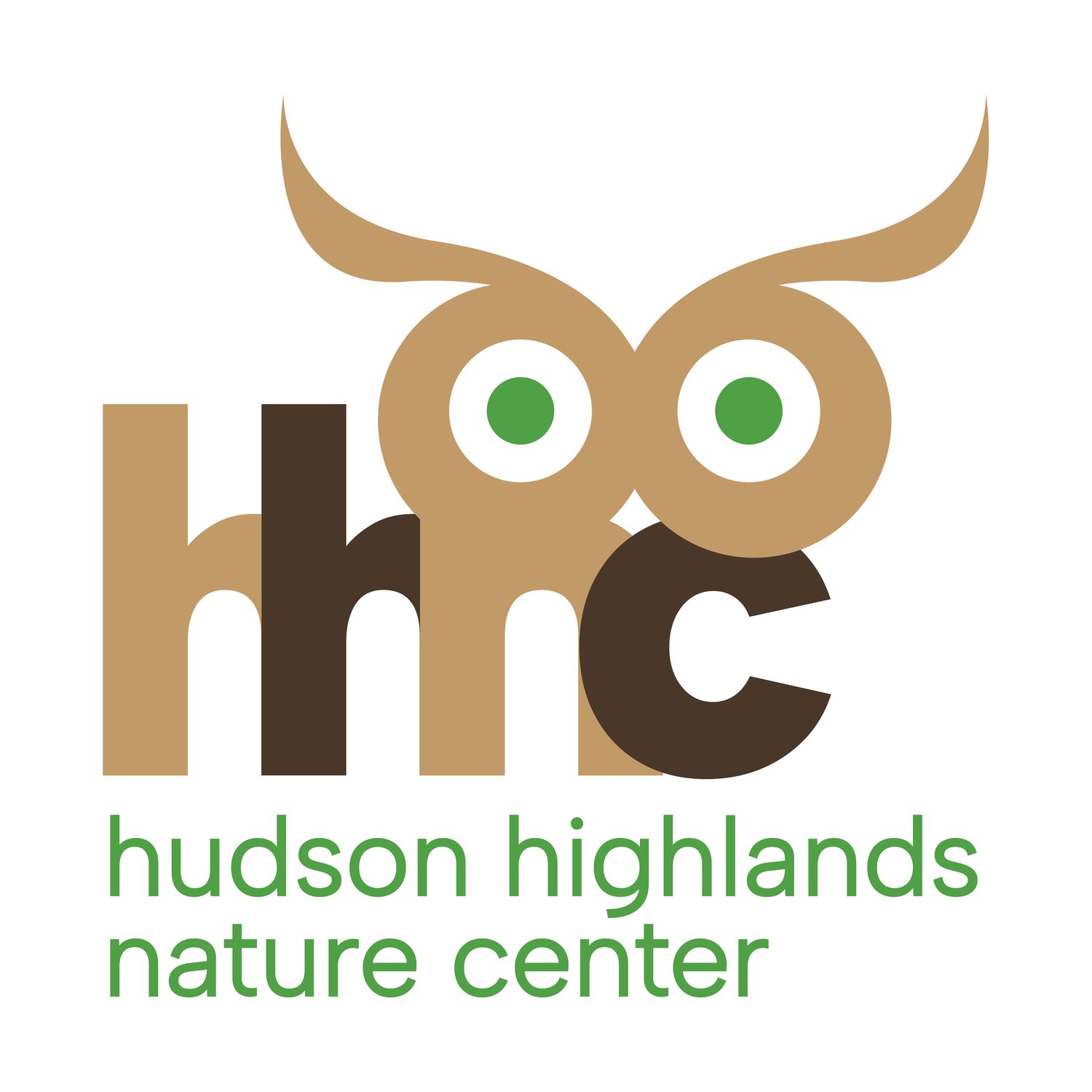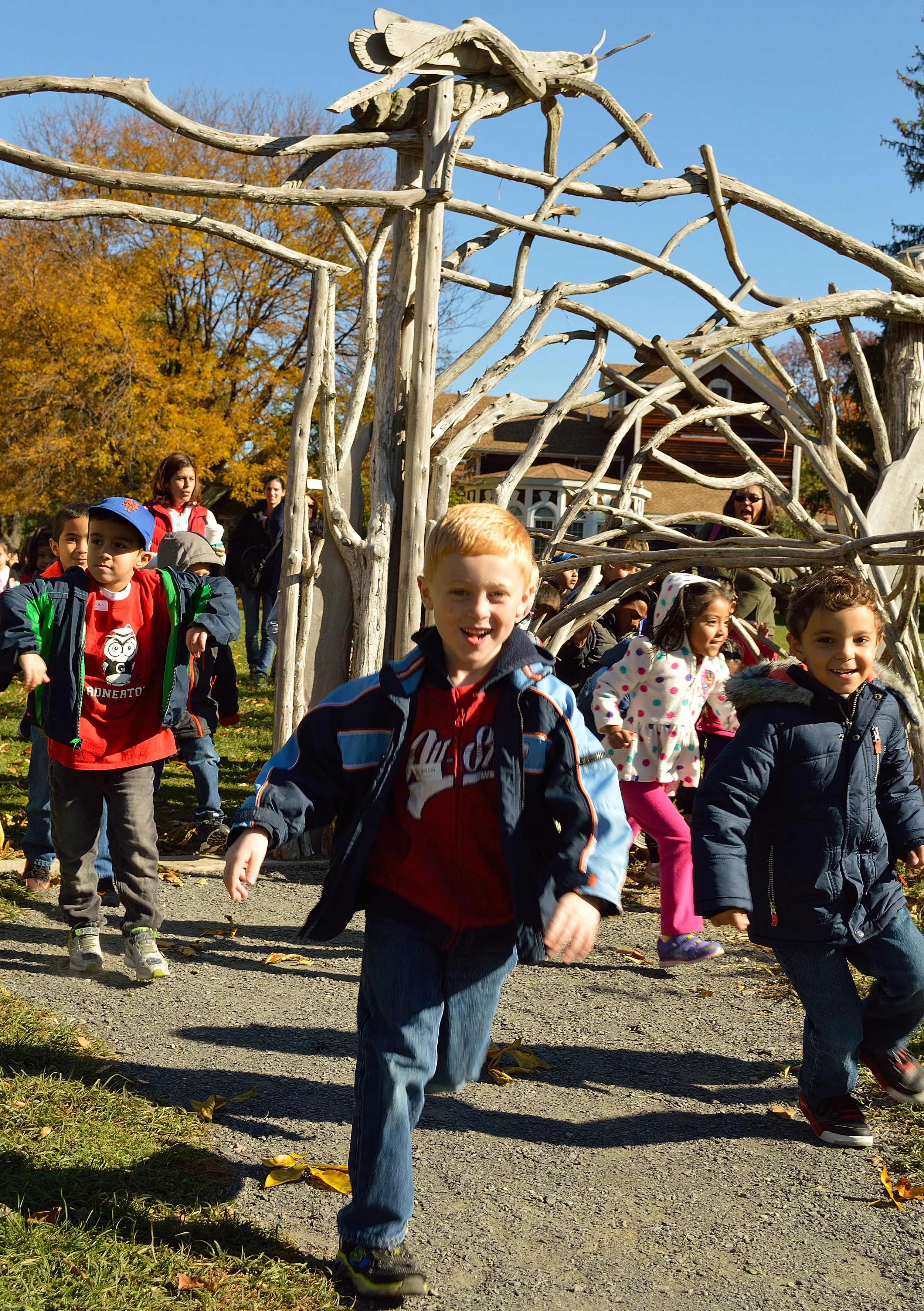Grasshopper Grove is a ‘bridge’ between a mowed lawn and the wild woods, that inspires children to discover nature play spaces in their own backyards and the wider world. Natural elements are at the heart of child-centered play. They have the opportunity to experience things that many children miss out on in today's over-scheduled and technology driven world. In Grasshopper Grove, children will be encouraged to explore this world around them, get dirty and above all, have fun! Children can use their imaginations to build in the ‘loose parts’ area, and combine a slab of slate, rainwater and a paint brush to create an artistic masterpiece. They can hop from stump to stump, play in the sand and dirt pile and more! These simple activities strengthen hand-eye coordination and muscle development while fostering creativity, critical thinking, appropriate risk-taking, problem solving and cooperation which are all critical to healthy childhood development. Grasshopper Grove is open seasonally from Mid-April through Mid-November.
Where:
Outdoor Discovery Campus: 120 Muser Drive, Cornwall NY 12518 FIND DIRECTIONS HERE
When:
Saturdays & Sundays *(unless otherwise noted below)
*-GG will be open on Saturday, April 20 from 11am-3pm
*-GG will be closed on Sunday, April 21
*-GG will close at 2pm on Sunday June 23rd10am-4pm
ADMISSION:
HHNM MEMBERS - FREE
NOT-YET-MEMBERS - $5 PER PERSON ages 3 and up
CHILDREN 2 and under - FREE
Cash is preferred but credit and paypal (use the QR code at the sign-in table for simple registration - please select the “Family & Friends” option when checking out) are also accepted.
Upon arrival at the Outdoor Discovery Campus head to the Farmhouse porch to check in
Want to become a member and receive free admission?
Click here!
Click here to learn about Grasshopper Grove Birthday Parties!
RULES AND GUIDELINES:
Be kind to your community- If anybody in your party is not feeling well, STAY HOME!
Carry in, carry out.
Grasshopper Gives Scholarship Fund
You can ensure every child has the opportunity to experience nature play in Grasshopper Grove. No family should ever be turned away for lack of funds.
Frequently asked questions:
Click here to watch a video about Grasshopper Grove
Why did the Hudson Highlands Nature Center Build Grasshopper Grove?
Children are born with an innate sense of curiosity, adventure and imagination. Grasshopper Grove is a place where they can cultivate those qualities through open-ended, hands-on outdoor exploration-also called “Nature Play.” For many of us, this type of play defined our childhood and became the root of our conservation values as we grew. These early experiences in the natural world captivated our sense of wonder, made us love and appreciate our natural surroundings and made us want to preserve it for future generations.
Unfortunately, many kids today do not have the outdoor nature experiences that were once so commonplace-a lack of connection that author of Last Child in the Woods, Richard Louv, calls “Nature Deficit Disorder.” With Grasshopper Grove, we are sowing the seeds for the next generation of environmental stewards by creating a place where children can inquire, reflect, run and play in a beautiful natural setting. It is a ‘bridge’ between a mowed lawn and the wild woods, that will encourage children to discover nature play spaces in their own backyards and the wider world.
What is there for children to do in Grasshopper Grove?
Natural elements are at the heart of child-centered play. In Grasshopper Grove children will be encouraged to explore this world, get dirty and above all, HAVE FUN! Creative children will turn pinecones, bark, sticks and leaves into fairy houses in the ‘loose parts’ area, imagine that a fallen tree is a spaceship and combine a slab of slate, rainwater and a paint brush to create an artistic masterpiece. Children can hop from stump to stump, dance, sing and perform in the Adirondack lean-to, lie down on the top of a hill and watch the clouds make pictures in the sky, read a story with Mom or Dad in the rustic gazebo, water and weed a garden and construct roads, tunnels and bridges in the sand and dirt pile. These simple activities strengthen eye-hand coordination and muscle development while fostering creativity, critical thinking, appropriate risk-taking, problem solving and cooperation-all critical to healthy childhood development.
How was Grasshopper Grove designed?
Grasshopper Grove follows a design developed in collaboration with Center staff, board, parents and preschool students by one of the world’s leaders in the field, Adam Bienenstock of Bienenstock Natural Playgrounds. Beginning with a half-acre of field surrounded by a rough stone wall and mature shag bark hickory trees, the area was graded to incorporate a low hill surrounded by a path, a dry stream bed and a higher hill offering a view of nearby fields and ponds.
Taking inspiration from the ‘wild’ areas of the Outdoor Discovery Campus, where the Young Naturalist Preschoolers love to play, elements were added to the area that include a fallen oak tree for climbing, large boulders, a wooden gazebo and Adirondack lean-to and an area of ‘loose parts’ for building. A series of cedar troughs catch water flowing from an old fashioned hand pump into the dry stream bed.
Who made Grasshopper Grove possible?
Grasshopper Grove is the result of a collaborative effort. The staff, board, parents and community came together to create this wonderful Nature Play Space. Executive Director, Jackie Grant spearheaded the effort utilizing grants from the Hudson River Valley Greenway and a foundation that prefers to remain anonymous for the design consultation and initial startup funding. Many in the community generously gave their money, time and talent to make Grasshopper Grove a reality. The Nature Center wishes to thank the following for their generosity and support:
• The Garden Club of Orange and Dutchess who selected and funded the purchasing and installation of the trees and shrubs and designed and installed a lovely sensory garden.
• The Fred Najork family for sponsoring our rustic Adirondack Lean-to
• Jay Nannini for his physical labor, countless hours spent on the project and the donation and installation of the fallen tree
• The Callahan & Nannini Quarry for all of the earth-moving and gravel for the pathways
• Bob Nannini and Nannini & Callahan Excavating for the loan of the earth moving equipment
• Eugene and Buck Randazzo of Randazzo’s landscaping for installing the trees and shrubs and with the guidance of Jan Jansen, installing the deer fencing
• John Disalvo and Brian Foley for their efforts inthe installation of the electric lines
• George Onufer for the benches completed as an eagle scout project (the benches follow a design by famed naturalist Aldo Leopold)
• Black Rock Forest Consortium for the donation and milling of the oak for the benches
• Daniel Mack, Warwick artist and rustic builder, who saw the tremendous potential in the project and agreed to oversee the building of the structural elements-the Learning Gazebo, Adirondack lean-to, water feature, kiosk, spiral bench, bridges andplatform and Joe Connor of Old World Trading Company who worked with Daniel to do the physical construction (The local red cedar is from Will Brown’s Lowland Farm in Amity, NY and it was milled at the Holodinski Farm)
• Judd Weisberg, rustic builder who constructed the playful, welcoming entry gate and signature grasshopper
• Stonemason Michael Jamieson of Jamieson Stoneworks and his crew for releasing and reconfiguring the rocks and boulders to create play opportunities and a flat stone wall for walking on
• Steve Cartoon for the construction of the hillside platform
• Debbie and John Edelen for the construction of the bean pole tee pee
• Chris Novak for the development of construction drawings and site plan adjustments
• Craig Pelsue for his expertise in project planning and landscape design
• The Roots & Shoots club and Young Naturalist families for their assistance with clean up and final touches
• The talented and enthusiastic staff who share their love and knowledge of the natural world, conveying our stewardship ethic to the children and adults in our community
• The three and four year old Young Naturalist Preschoolers both past and present for their insight and inspiration
Want to learn more about Nature Play? Follow our Nature Play Today page on Facebook for suggestions, tips, articles and all things Nature Play!


